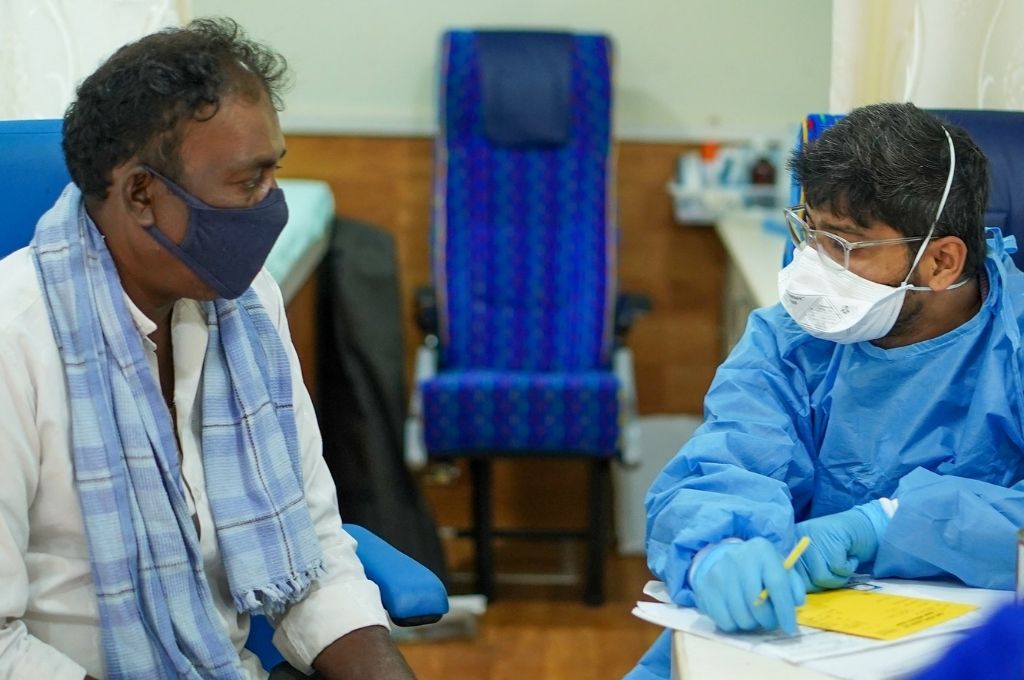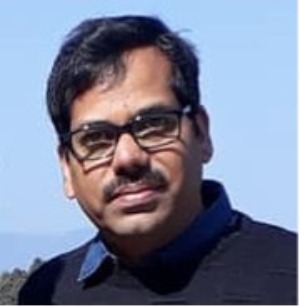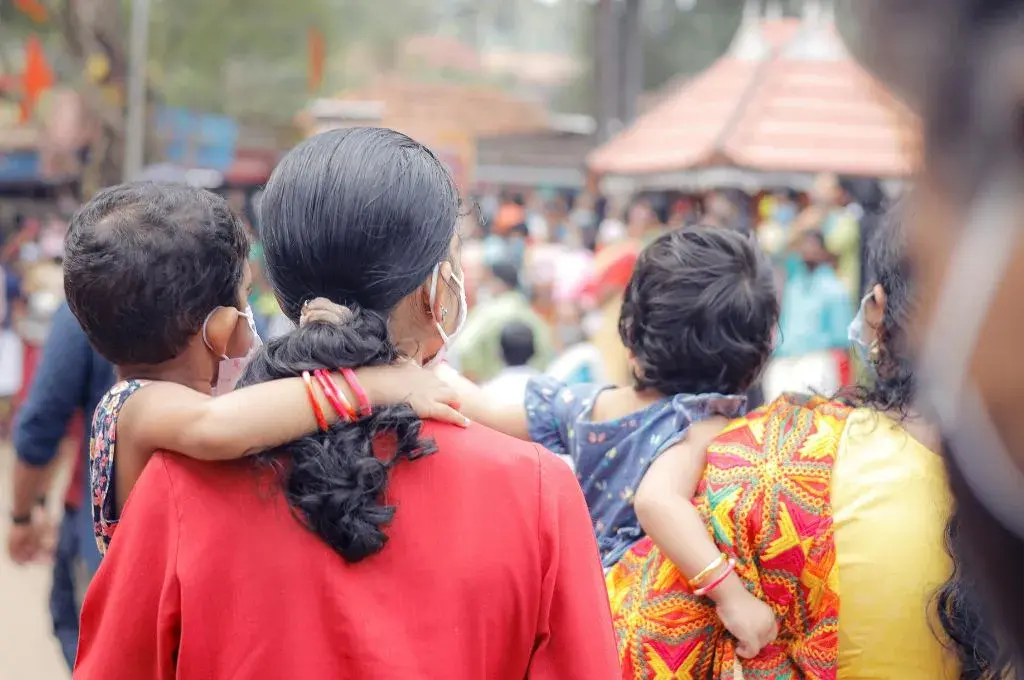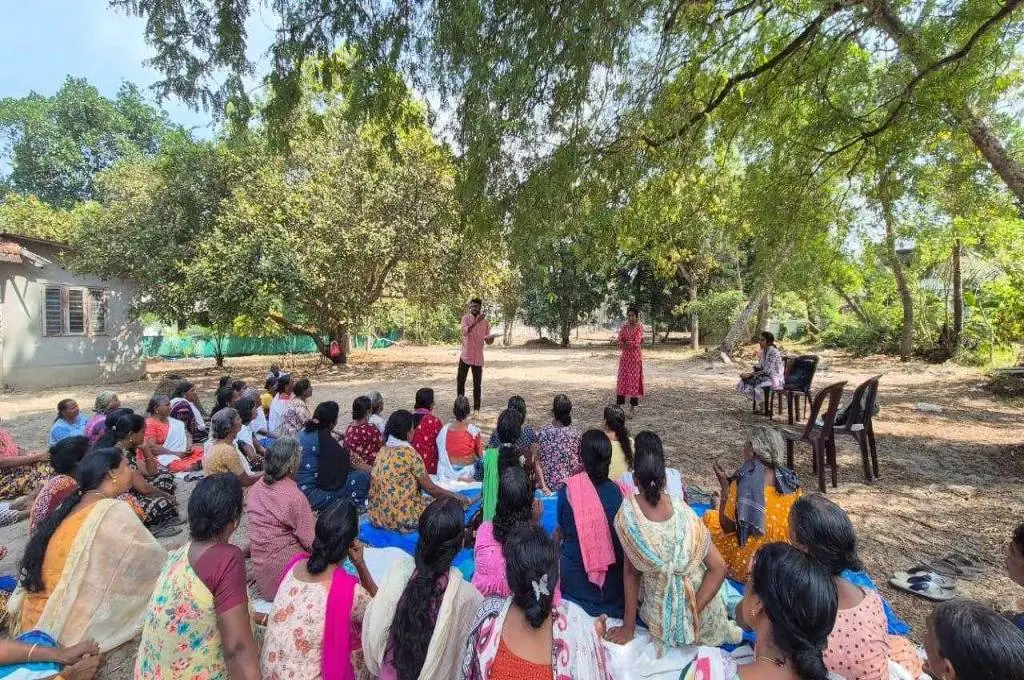Primary healthcare centres (PHCs) in rural India are the first point of response, when people report sickness. Their role, especially during the pandemic, is to ensure primary care and treatment for patients, prevent the spread of the infection through early detection, and provide the necessary support for home-based care that will help reduce the pressure on hospitals.
In reality, however, the COVID-19 pandemic has starkly exposed the poor foundation of the primary healthcare system. The number of rural people requiring medical care and emergency support during this second wave has increased, and the PHCs—which are managed with poor infrastructure, inadequate manpower, and ineffective planning—have failed to provide the necessary support and services.
To respond to the situation, the state of Jharkhand has adopted a set of COVID-19 response protocols, which reflect the challenges in availability and accessibility of life-saving services, especially in rural areas.

As on May 23rd, 2021, Jharkhand had reported a total of 330,417 cases, out of which the total active cases were 19,499, and total deaths reported stood at 4,838.
The state of primary healthcare
As with many other states, PHCs are a neglected component of the Jharkhand health system. They are understaffed and underutilised. Many PHCs are staffed only with ANMs, and as a result, laboratory and pharmacy services are often unavailable due to a lack of expertise. There is a significant shortage of medical officers, nurses, and paramedical staff in the state, and trained human resources are randomly deployed regardless of the need or skillset. Hence most skilled people are concentrated in a few districts or in some blocks only within a district. There is also no assessment of the training needs of clinical staff, or adequate physical infrastructure for healthcare.
Given this background, Jharkhand has had to mount a COVID-19 response to address the rising surge in the state.
Testing
As on May 23rd, 2021, more than 81 lakh samples were tested, with more than 3 lakh cases testing positive. So far, the state has 12 functional RT-PCR machines (eight in government facilities and four in private facilities), 191 TrueNat machines (installed mostly in district hospitals or at select community health centres for screening and confirmation of COVID-19). Apart from this, rapid antigen tests are being conducted across the state.
Non-availability of drugs is a key issue in rural areas, with markets unable to provide the medicines needed to treat the disease.
As is evident, the biggest bottleneck is the non-availability of testing kits and equipment leading to lower testing than what the present situation requires. These issues prevail due to several factors—poor planning and governance, issues around logistics, and chronic human resource shortages. Of the limited number of medical and non-medical personnel available, a significant percentage have tested positive for COVID-19 as observed in fifteen identified blocks in Jharkhand. This has further reduced the deployment of people to conduct the tests.
Apart from this, there is a reluctance on the part of community members in getting themselves tested due to multiple myths and misconceptions that are circulating. The TrueNAT machines require careful operation, and it has been observed that five percent breakdown every day. Bringing these machines to Ranchi for repairs and then transporting them back to their respective districts is a major logistical challenge.

Vaccination
As per the state-level sources, as on May 24th, 2021, Jharkhand has provided the first dose of the vaccine to 91 percent of healthcare workers, 85 percent of the targeted frontline workers, and 28 percent of the population above the age of 45. With respect to the second dose, only 86 percent of the healthcare workers, 80 percent of the frontline workers, and 78 percent of the population above 45 years of age have been covered.
The number of people getting vaccinated has been declining.
The number of people getting vaccinated has been declining. Through our work on the ground, we’ve seen that after receiving their first dose, many were infected with the virus during the second wave. This led people to think that the vaccine wasn’t effective, and hence many have opted to not go for the second dose. In fact, after receiving the first dose, many people experienced common side effects such as fever, body ache, and others. However, basic medicines (such as paracetamol) were not made available to combat these, which caused some confusion around the effects of the vaccination itself.
Early detection and treatment
The state has directed the health ministry, the rural development ministry, and panchayats to engage their field-level cadres in promoting home isolation, early testing, and treatment. They have also been encouraged to use the funds allocated under the 15th finance commission to manage quarantine centres at the panchayat-level, with a focus on isolating inbound migrant workers from other states.
However, this process has its hurdles:
- Many families live in small huts with a single room and multiple family members. In such cases pushing for home isolation of an affected family member is not practically possible.
- Till symptomatic individuals are tested and receive their ‘positive’ reports, no medical kits are made available to them. However, there is a time lag between identification of the symptoms, testing, and report generation. In this time, affected individuals may go to ‘quacks’ or informal, unqualified doctors for treatment, or choose to stay without any medical care—putting themselves and others at risk. Although these rural medical professionals fill in for an absent government health system in rural areas, they have been excluded from any formal orientation on COVID-19 management. And so, they treat people as per their wisdom and knowledge, putting thousands of people at risk.
- Non-availability of drugs is a key issue in rural areas, with markets unable to provide the medicines needed to treat the disease.

Fear factor
A considerable percentage of healthcare workers and frontline workers have been affected by the virus, to varying degrees. Watching them suffer, their peers are becoming hesitant to step out and conduct their outreach and make home visits for community surveillance of COVID-19 cases.
A great deal of support needs to be provided to patients during their home isolation or in hospitals, in terms of ensuring drugs, food, and managing money in the absence of any income.
People have also noticed that the disease not only affects the patients, but also their entire families. A great deal of support needs to be provided to patients during their home isolation or in hospitals, in terms of ensuring drugs, food, managing money in the absence of any income, and so on. In some cases, community members have become violent when frontline workers encourage them to get tested or vaccinated. In few places it was observed that people stop communicating with their neighbouring villages if those villages are reporting a higher number of COVID-19 cases and deaths.
Distance from care centres
The state has set up different levels of COVID-19 care centres and facilities for managing mild, moderate, and severe cases. Large parts of Jharkhand are remote and forested, and villagers face an additional challenge of having to traverse these distances, in order to access these centres. PHCs in their local areas do not have the equipment to treat patients requiring oxygen support or any other critical care.
People in districts such as Simdega, Dumka, Godda, and others that share their borders with other states—Chhattisgarh, Odisha, or West Bengal—prefer to step across the border to avail medical assistance. This is because those healthcare centres are closer and can also provide effective services—as people have experienced over the last several years. However, with inter-state travel restricted, they are unable to do this, endangering the lives of thousands of people.
The state has so far been able to initiate procurement of oxygen, ventilators, and other emergency equipment. But it requires huge investment, time, and robust planning to install and run it in rural areas.
Lack of access to other services
Access to other healthcare services such as maternal and child health services, infectious disease control, non-communicable diseases, and emergency and elective surgical care has been severely impacted due to the focus on COVID-19 care.
The expectation that the government-mandated health and wellness centres will offer comprehensive healthcare services to the people has not materialised. Such functional facilities could have contributed significantly even in preventing and responding to the COVID-19 crisis.
Suggested measures
There are a range of steps that the government can take to help address the situation:
- Initiate a process to equip PHCs to provide basic services, with oxygenated bed facilities at community healthcare centres, PHCs, and health sub-centres. Bed strength at district hospitals and COVID-19 care centres should be improved in coordination with private hospitals wherever feasible.
- Ensure a minimum number of critical care units in every district. Communicate information regarding the availability of beds and services available in such facilities to communities. The current app-based systems do not work for rural people in the state. The concept of helpdesks should be promoted as a comprehensive service package, and must have strong communication and networking systems with each of the panchayats and villages.
- Issue a comprehensive guideline along with an operational framework for community-based surveillance, home isolation considering its practicality, provisioning village-based isolation centres, drug administration, and support mechanisms to affected people and their family members. Alongside, create isolation facilities at the village-level for symptomatic cases.
- Strengthen the 104 health helpline services to deliver medical advice to most people in rural Jharkhand. Engage civil society organisations and religious or traditional leaders for the required counselling, follow-up, availability of drug kits at home, quarantine centres, among others.
- Offer telemedicine facility at the health and wellness centres and at the health sub-centres.
- Engage strategically with development partners, donors, CSR, and nonprofits for effective collaboration and community engagement to promote COVID-19-appropriate behaviour and targeted intervention for addressing vaccination issues, setting up mechanisms for critical care, and more.
—
Know more
- Read suggestions about what NGOs can do to tackle the rising COVID-19 cases in Jharkhand and central India.
- Read more about how India’s current vaccine drive might leave out millions.
- Read this perspective that makes a case for a larger involvement of the private sector in the provision of healthcare services.
Do more
- Support nonprofits working on COVID-19 relief efforts and initiatives in Jharkhand such as Transform Rural India Foundation, Child in Need Institute (CINI), Gram Vikas, Professional Assistance for Development Action (PRADAN), Srijan Foundation and others. Find more nonprofits to support here.




